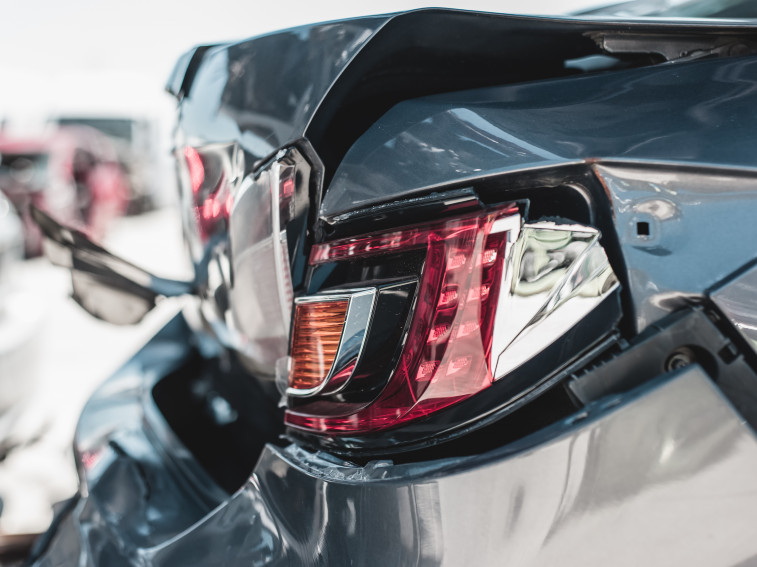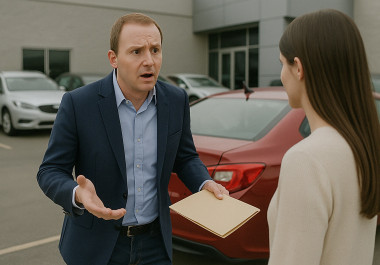Different salvage cars are useful for different things, depending on their level of damage. Some salvage cars, like Category B, are legally only good for spare parts. However, other vehicles like Category S or N may may be capable of being made roadworthy again - even if the job of doing so isn’t cheap or easy.
You’ll typically find yourself as the owner of a salvage car in one of two ways - either your own car has been written off and you’ve decided to buy it back from your insurer, or you’ve decided to buy one from our British salvage car auctions from right here at RAW2K. Whatever the case, getting the car back on the road involves the same basic process.
Reclaiming your salvage car from your insurer
If your car suffers damage that causes it to become unroadworthy (usually because of a collision) your insurer may well decide to have it written off rather than pay to have it repaired. They’ll do this when the cost of the necessary repairs outweigh the total value of the car, in which case repairing it wouldn’t make financial sense for them. Now, you’ll generally have the option to buy it back from them, although some insurers make this clearer than others. You might choose to do this for any one of several reasons - perhaps the car holds some emotional value for you, or perhaps you disagree with their assessment. Maybe you’re sure you can even do the repairs yourself. Whatever the case, unless it’s classed as Category A or B, reclaiming the car is generally an option.
However, it’s worth stopping to consider whether it really is the right choice. Even a Category N vehicle, which presents the least financial risk, is still not necessarily one that you might want to reclaim. Essentially, when you reclaim any car from your insurer, you’re generally faced with the likelihood of losing money.
This is important; remember that the whole reason it was written off is that the insurance company didn’t think it made financial sense to repair. This means that by definition, you’ll usually get more money by accepting their payout than you would by retaining the vehicle and paying to get it repaired. This isn’t a hard and fast rule, but it’s generally a sure bet, so it’s wise to only start the reclamation process if you’re ready to deal with the potentially large costs you might incur to get it roadworthy again. (The same is true of our own online vehicle auctions - only bid on a car if you’re fully prepared!)
Getting the car roadworthy again
Now, one of the odd quirks of the system is that a car doesn’t even have to be that badly damaged in order to be written off. It’s an old and heavily depreciated car, a relatively minor scrape might be all it takes to push it over the edge into write-off territory. After all, insurers don’t go on gut instinct, and what they think COULD be repaired - they just go on cold hard maths.
That means there are several possible scenarios in which choosing to buy the car back can still work out in your favour. For example, the car may have suffered some minor damage that’s easily repairable, such as a missing wing-mirror. It may have a couple of dents in the bodywork that you’re prepared to ignore, or suffer from an engine fault that you’ve got the tools, skills and experience to fix yourself.

Whatever the case, before you decide to buy the car back, you need to assess what work the car requires, and how much it’s going to cost in money or man hours. (Obviously, this is definitely a decision you have to make before committing to the purchase!) In other words, before you consider whether you want to get it roadworthy again, you first have to ask - is it even possible?
Once you’ve bought the car and arranged for the repairs to be made, the vehicle will need to have a valid MOT certificate before you can move onto dealing with insurance. Sometimes, the fault that caused it to be written off won’t have been enough to invalidate its existing MOT certificate (see our broken wing mirror example above), in which case half the job is already done for you!
Covering the car’s insurance policy
Before the car can be taken out onto the roads again, it will need to have a valid insurance policy. Most insurers will terminate an existing policy from the moment it gets written off - that’s literally the definition of the term. That means you’ll have to get it reinsured before you can drive it again. The majority of people find that Category S (formerly known as Category D) cars will be virtually impossible to insure, and if they are they’ll be subject to very high premiums to cover the associated rise in risk. While the costs won’t be quite as high for Category N cars, you’ll still find that premiums are significantly higher than you’d pay for a brand new model. (We’ve covered the topic of Category N insurance in a previous post.)
Sometimes, you may find that the insurance policy wasn’t automatically cancelled for some reason, in which case you normally won’t need to do anything else. If the MOT is still valid, your insurer won’t usually require anything more from you.
It’s a process that’s straightforward enough, but deciding whether it’s right for you requires some careful consideration in advance! It’s arguably easiest for professional mechanics, who’ll possess their own equipment and skills to get the car up and running again. But here at RAW2K, we cater to everyone, from mechanics to dealers to first-time buyers alike. We’ve got a huge range of salvage and auction cars from leading manufacturers like Ford, Peugeot and Vauxhall, and our auctions are refreshed on a daily and weekly basis. Why not take a look around, and see what you can find?




